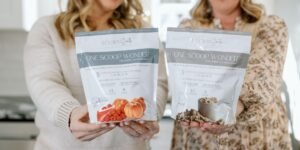By: John Glover (MBA)
Hobbies enrich our lives in countless ways, offering us an outlet for creativity and stress relief. However, the costs associated with different hobbies can vary significantly. Here’s a closer look at the expenses involved in several popular hobbies, including stained glass making, ceramics, quilting, jewelry making, and gardening.
Stained Glass Making
Stained glass making is a rewarding yet potentially costly hobby. Beginners can start with a starter kit ranging from $200 to $400, typically including glass cutters, soldering equipment, and a selection of glass. Glass pieces can cost between $6 to $30 per square foot, depending on the color and type. Additionally, ongoing costs include copper foil, lead came, and solder, which might total around $100 to $150 for several small projects. According to a hobbyist survey, enthusiasts spend an average of $1,000 annually on materials and equipment.
Ceramics
Ceramics is a tactile and deeply satisfying hobby that involves molding clay into beautiful objects. Initial costs include purchasing clay, which can cost anywhere from $20 to $50 per 25-pound bag, and glazes, which range from $10 to $40 per pint, depending on the brand and quality. The significant investment for serious hobbyists is a kiln, which can cost between $800 and $2,000, although communal studio memberships are available for those who prefer access to shared equipment. Overall, hobbyists might spend between $300 and $1,000 per year on supplies, not including classes or studio fees.
Quilting
Quilting is an age-old craft that involves sewing together layers of fabric to create intricate designs. Beginners can start with a basic sewing machine costing around $200. Fabric and batting can cost around $100 for a moderate-sized project, and high-quality quilting fabric ranges from $10 to $25 per yard. Other necessities include thread, needles, and quilting rulers. Regular quilters often spend between $500 and $1,500 annually on their craft.
“The cost that goes into quilting can vary depending on what you are wanting to put into it and what you are wanting to get out of it. There are a lot of cost-effective ways of attaining quilting supplies, and once you get past the overhead cost, quilting can be a rather inexpensive hobby. People who quilt professionally, however, tend to spend more on supplies, but it is worth it for their overall profit,” says Corey Pearson, Master Quilter and VP of Customer Success at Linda’s Electric Quilters.
Jewelry Making
Jewelry-making can be as inexpensive or as expensive as one chooses, depending on the materials used. Basic tools like pliers, cutters, and a beading board may cost under $100. Materials such as beads, wires, and clasps vary widely in price; semi-precious stones and metals like silver and gold can quickly escalate costs. Hobbyists might spend anywhere from $100 to over $1,000 per year, especially if they venture into more luxurious materials or complex techniques.
Gardening
Gardening ranges from small container gardens to extensive backyard plots. The initial cost for basic gardening tools like a spade, hoe, and watering can is about $50 to $100. Seeds and plants are relatively inexpensive, but adding soil, mulch, and fertilizers can increase the budget. Perennial plants and landscaping projects can also add significant expenses. Typically, gardeners might spend $100 to $300 annually for a moderate garden, though more significant projects and unique plants can increase these costs substantially.
Each hobby comes with its own set of expenses, and while some require significant upfront costs, others can be pursued on a modest budget. The joy and satisfaction derived from these activities often outweigh the financial investment, making them a worthwhile expenditure for many.
Published by: Khy Talara









